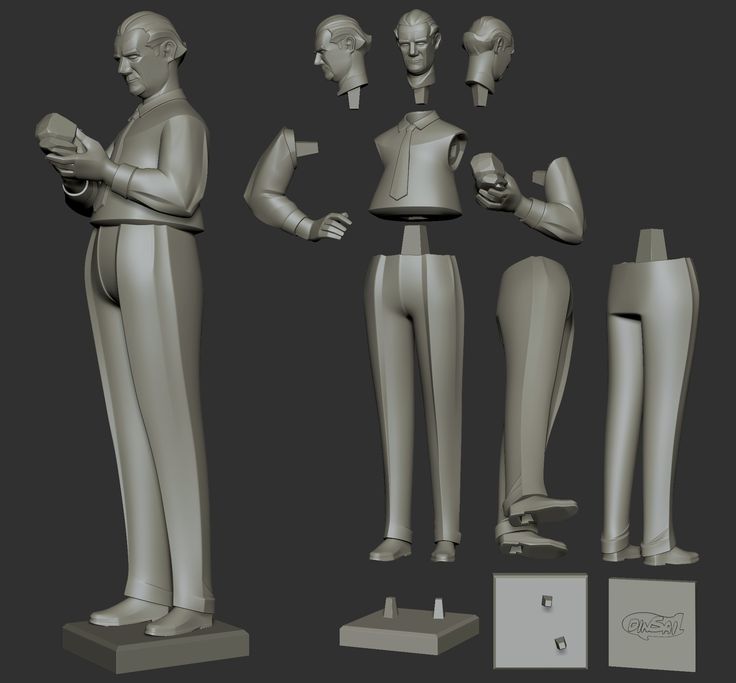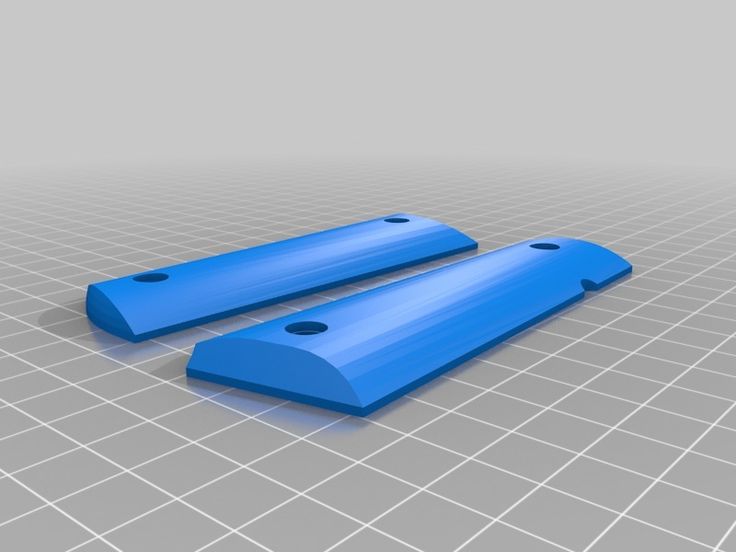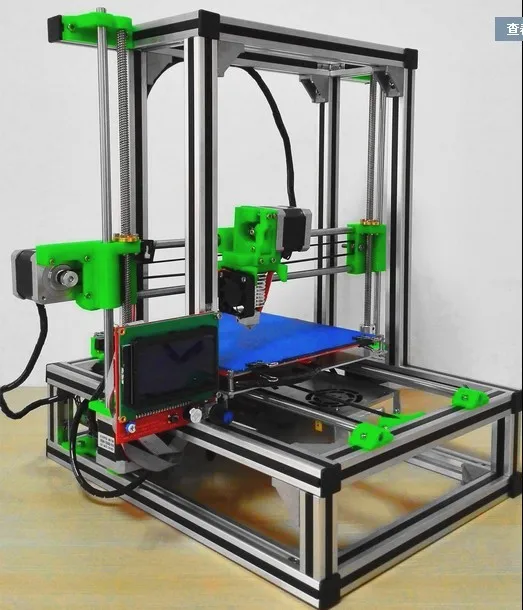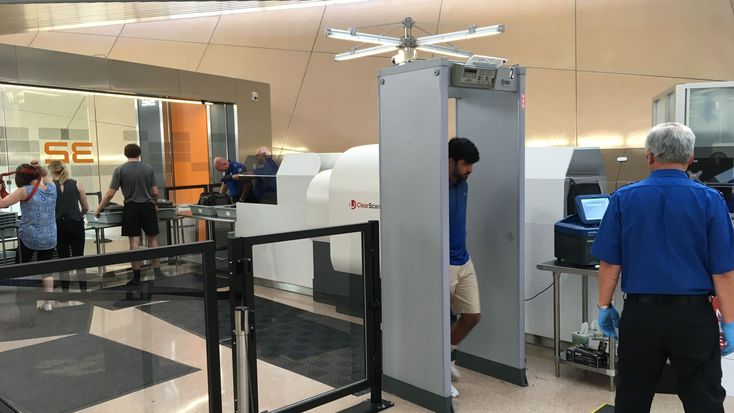3D printer made in canada
Canadian-made 3D printer to take on big name competitors
Who knew the 80/20 rule applies as much to 3D printer technology as it does to diet and exercise? Because that’s the precise ratio of aesthetic to performance enhancements Tinkerine Studios in Vancouver is offering in its latest 3D printer, the DittoPro – arguably giving a break from the relentless search for speed and power in return for an elegant, lower cost box in which to put it.
“[Our] previous models are [made from] laser cut wood and look like they’d [be suited for] a garage or a workshop,” says Tinkerine VP, Todd Blatt. “This machine, you’d be proud to have it on your desk.”
Blatt insists, however, that DittoPro is not just another pretty face. In development for just over a year, the new printer’s machined aluminum construction, over a 350 x 370 x 480mm footprint, also uses 43 percent less desktop than its competitors. The unit will have broad appeal says Tinkerine CEO Eugene Suyu, from prototype engineers and teachers to small business professionals.
“It really allows entrepreneurs to explore their ideas into real life and have access to something they didn’t have before: toys for the kids or to explore the robotics of industry that’s exploding in education; all those applications are now opening up,” he says.
Advertisement
In fact, Tinkerine came into being as a result of Suyu’s own education. A graduate of Simon Fraser University in 2012, Suyu says he built his own 3D printing skills by tinkering with the “rods and bolts” of an open source RepRap printer. Suyu quickly decided that this technology wasn’t up to snuff. As prosumer models had yet to be introduced, he set out to rectify that by designing his own 3D printer.
“We found working on an open source platform was more tuning, tweaking, hacking and making as opposed to utilizing the tools of the machine for creating the actual product,” he says. “That was what I wanted to achieve.”
Scroll forward two years and Suyu’s newest 3D printer has increased speed over its predecessors, the Ditto+ and Litto, by 20 percent and doubled the resolution from 100 to 50 microns.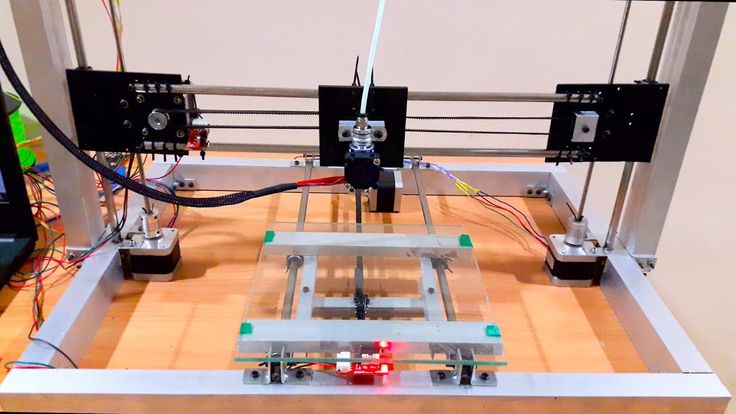 Equally important, says Blatt, is Tinkerine’s open C frame design providing DittoPro with a build volume of 225mm x 165mm x 205mm for printing larger sizes—in other words, a little bit wider, deeper and taller than competitors’ 3D printers.
Equally important, says Blatt, is Tinkerine’s open C frame design providing DittoPro with a build volume of 225mm x 165mm x 205mm for printing larger sizes—in other words, a little bit wider, deeper and taller than competitors’ 3D printers.
“As a designer, I would find the height of those machines crippling,” says Blatt. “Using DittoPro, you get more detail when you’re printing on the Z axis. You’re able to print taller things because the machine is taller.”
Suyu agrees. “We just wanted to make one that you could utilize around what you want to build. So you’re not limited. You can open yourself up to long objects as well as small objects.”
The aluminum construction and stable glass print bed allows precision printing of very small parts as well. In addition, DittoPro relies on an open spool filament system to avoid lock-in to a cartridge system, says Blatt. It’s a complaint aimed at CubePro and other cartridge-based 3D printer manufacturers. Blatt says that, far from being grateful that they can send back their empty cartridges in return for a discount on new cartridges, some customers view it as a money grab.
“They’re offering a discount on a very expensive product, so it’s deceptive,” he says. “You get much, much less plastic, like one third of the amount, and they charge more for the cartridge.” By contrast, he says, DittoPro’s filament system accommodates other manufacturers’ filament. “Not only do we manufacture high quality filament at an affordable cost, we’re not requiring you to use it.”
Beyond the printer’s larger build space, Tinkerine’s other objective is one-click operation and ease-of-use functionality with all settings available at the software level and automatic file generation. Available on Windows or Mac, Blatt says the printer’s software guides users through the printing process.
“You just push the import button,” he says, “[The software] brings in your model and puts it on the platform for you. There’s nothing imposing about it; the settings are preset and you’re ready to go.”
Suyu says Tinkerine prides itself on building high performance units at an affordable price. The price tag for its DittoPro seems to bear this out. At a retail price of US$1,899, it’s lower than MakerBot’s previous Replicator 2X (US$2,499), though that model’s build volume is comparable (246 x 152 x 155mm). By contrast, 3D Systems offers a single jet CubePro with comparable speed but a lower resolution of 100 microns and higher price tag of US$2,799.
The price tag for its DittoPro seems to bear this out. At a retail price of US$1,899, it’s lower than MakerBot’s previous Replicator 2X (US$2,499), though that model’s build volume is comparable (246 x 152 x 155mm). By contrast, 3D Systems offers a single jet CubePro with comparable speed but a lower resolution of 100 microns and higher price tag of US$2,799.
Has Tinkerine truly entered the big leagues in 3D printing? Perhaps not. MakerBot’s US$6,490 Replicator Z18 and 3D System’s US$5,000 CubePro, also unveiled this spring, justify their heftier price tags by providing higher build volumes (305mm x 305mm x 457mm; 275mm x 265mm x 240mm respectively) and connectivity that includes mobile and Wi-Fi. Neither is currently available with DittoPro.
www.tinkerine.com
Health Canada has approved its first Canadian-made 3D printed medical implant
0Shares
Health Canada, the government arm that deals with national health, has approved its first Canadian-made 3D printed medical implant.
The 3D printed device is a customizable mandibular (lower jaw) plate for use in facial reconstruction surgery, predominantly for patients with oral cancer. It can also be used in conjunction with surgical guides for cutting and drilling operations.
Named the Specifit 3D mandibular plate, the implant was developed by the 3D Anatomical Construction Laboratory (LARA 3D) in Quebec City. LARA 3D is a part of Investissement Québec (CRIQ), an organization providing product development services for new enterprises. The creation of the implant was also supported by the university hospital CHU de Québec-Université Laval, orthopedic screw manufacturer Alkom Digital, and metal powder firm AP&C (a GE Additive company).
The LARA 3D laboratory was launched in late 2020 and was issued an ISO 13485 certification in April 2021, meaning it’s certified to produce new medical devices for end-use healthcare applications.
“We are extremely proud to announce Health Canada’s approval of the Specifit 3D mandibular plate,” said Dr Gaston Bernier D. M.D., Medical Chief of Dental Medicine & Oncology at CHU de Québec-Université Laval.
M.D., Medical Chief of Dental Medicine & Oncology at CHU de Québec-Université Laval.
Oral cancer and mandibular reconstruction
For patients that have been diagnosed with oral cancer, the removal of a section of the lower jaw is sometimes a necessary procedure. In these cases, mandibular reconstruction surgery is often used to normalize the lower facial contour, regain architectural support, and improve the relationships between any affected teeth. The procedure can give patients greater functionality when it comes to both speaking and chewing, vastly improving their quality of life.
To enable mandibular reconstruction surgery, a mandibular plate is necessary. The device serves to align and stabilize the several pieces of bone that go into a reconstruction surgery, all while promoting healing and long-term bone fusion.
Bernier adds, “Not only will it improve patients’ quality of life; but thanks to optimized, guided, and personalized surgery; it will also enable the development of a 3D medical equipment center of expertise at Centre de recherche du CHU de Québec – Université Laval. We are convinced the approval of this technology marks only the start of innovation, research, and development in 3D medical printing at LARA 3D.”
We are convinced the approval of this technology marks only the start of innovation, research, and development in 3D medical printing at LARA 3D.”
The Specifit 3D mandibular plate
Health Canada issued the Specifit 3D mandibular plate approval in September 2021, enabling surgeons to use the implant, together with two surgical cutting and drilling guides, to treat patients.
According to the approval, the 3D Specifit mandibular plate must be 3D printed using biocompatible materials. Medical professionals will be able to produce the implant using titanium grade 23, leveraging either laser powder bed fusion (for the implant itself) or electron beam melting (for the two surgical cutting and drilling guides).
Since the device is designed to be customizable, treatments will benefit from being patient-specific. The implant can be 3D printed according to the anatomy of the patient, which will help improve surgery success rates, as well as reduce both surgery and recovery times.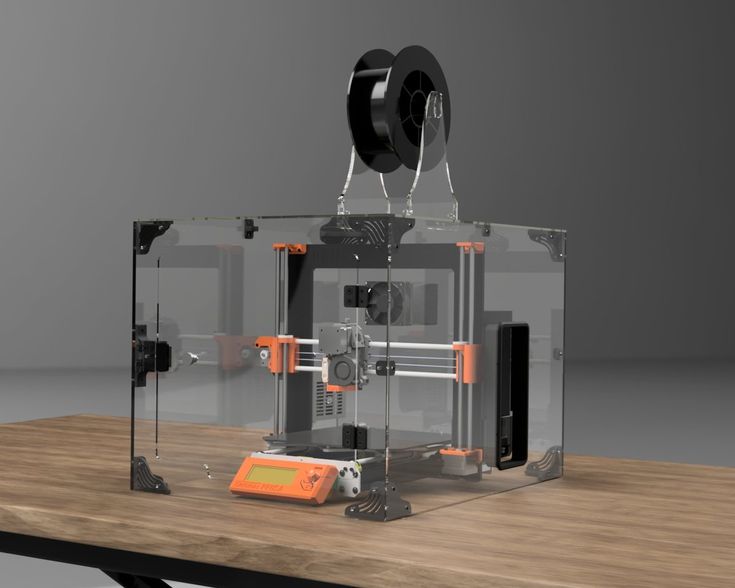
Lyne Dubois, VP of CRIQ, adds, “With LARA 3D, CRIQ fully embraces its leadership role in Additive Manufacturing in Québec. The Specifit line of 3D prostheses will meet the needs of the healthcare sector and provide improved quality of life for patients. It also demonstrates the wide range of possibilities 3D printing affords companies that must design complex, light, and durable parts. The expertise acquired by CRIQ is accessible to the entire 3D printing ecosystem in Québec.”
The Investissement Québec (CRIQ) headquarters. Photo via Investissement Québec.Just in September, Danish medical device manufacturer Particle3D was granted a Chinese patent for a novel bio-ink that enables the 3D printing of fully-resorbable porous bone implants. Composed of ceramic suspended in a fatty acid matrix, the firm’s biomaterial enables the production of patient-specific grafts with ‘bone-like’ porosity.
Elsewhere, at the University of Basel, researchers recently developed a novel 3D printed implant for treating eye socket fractures that carries a reduced risk of patient rejection.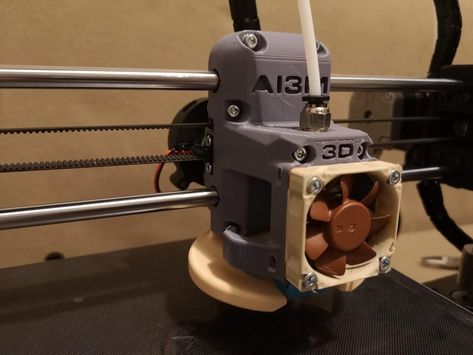 Constructed using a Prusa i3 3D printer and PEEK filament, the team’s grafts are able to overcome the bioinertness of their material thanks to their porous features, which can be tailored to enhance cellular repair.
Constructed using a Prusa i3 3D printer and PEEK filament, the team’s grafts are able to overcome the bioinertness of their material thanks to their porous features, which can be tailored to enhance cellular repair.
Subscribe to the 3D Printing Industry newsletter for the latest news in additive manufacturing. You can also stay connected by following us on Twitter, liking us on Facebook, and tuning into the 3D Printing Industry YouTube Channel.
Looking for a career in additive manufacturing? Visit 3D Printing Jobs for a selection of roles in the industry.
Featured image shows an example of a mandibular plate. Photo via Xilloc.
Tags Alkom Digital AP&C CHU de Québec-Université Laval Gaston Bernier Health Canada Investissement Québec Lyne Dubois
Kubi Sertoglu
Kubi Sertoglu holds a degree in Mechanical Engineering, combining an affinity for writing with a technical background to deliver the latest news and reviews in additive manufacturing.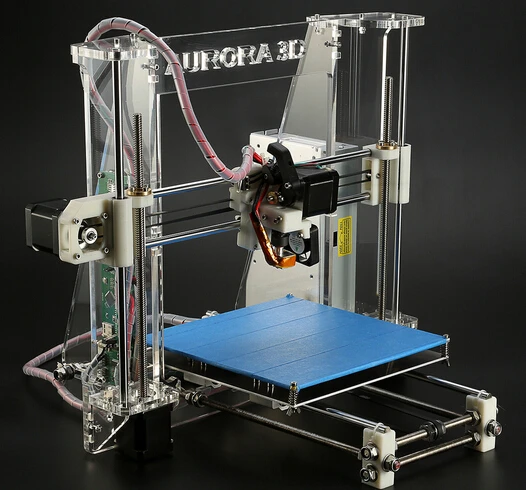
What Europe's first fully 3D printed house looks like
Trends
TV channel
Pro
Investments
Events
RBC+
New economy
Trends nine0003
Real estate
Sport
Style
National projects
Town
Crypto
Debating club
Research
Credit ratings nine0003
Franchises
Newspaper
Special projects St. Petersburg
Petersburg
Conferences St. Petersburg
Special projects
Checking counterparties
RBC Library
Podcasts
ESG index nine0003
Policy
Economy
Business
Technology and media
Finance
RBC CompanyRBC Life
RBC Trends
Photo: Project Milestone
Europe's first fully 3D printed home welcomes its new occupants, a couple from Amsterdam
What's happening
What it means
The creation of the first fully 3D printed house in the Netherlands is just the beginning of a new phase in the industry.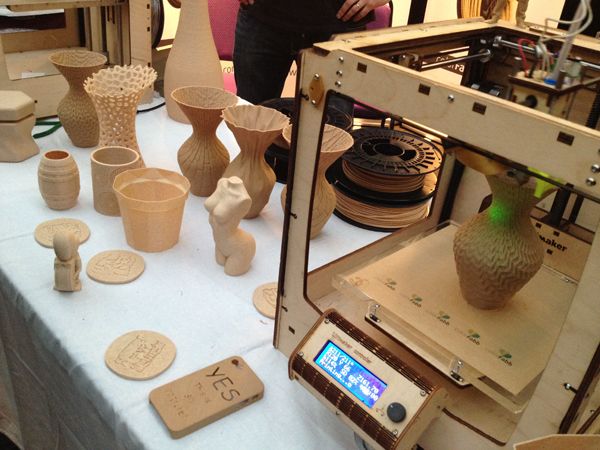 Residential buildings built using 3D printing technology have a number of significant advantages over "classic" buildings. Firstly, the speed of the project, the first house was printed in five days, but going forward, the company plans to produce concrete elements on site, as well as use a 3D printer to create auxiliary installations, which will reduce construction time and costs. nine0003
Residential buildings built using 3D printing technology have a number of significant advantages over "classic" buildings. Firstly, the speed of the project, the first house was printed in five days, but going forward, the company plans to produce concrete elements on site, as well as use a 3D printer to create auxiliary installations, which will reduce construction time and costs. nine0003
In addition, in an era of global concern about the state of the environment, such "green" technologies help to reduce environmental damage to the environment - with 3D printing, the consumption of cement and waste of building materials is much less than with "traditional" construction.
Finally, with the help of a 3D printer, almost any design idea can be realized, which will allow you to move away from the concept of residential buildings in the form of "concrete boxes". The development of this technology makes it possible to erect buildings of such forms that are difficult and expensive to build using traditional methods. nine0003
nine0003
The technology of printing houses on a 3D printer is actively developing in Russia, France, the USA and other countries. It is assumed that this will help solve the problem of providing citizens with affordable and decent housing.
Updated on 07/30/2021
Text
Ksenia Yanushkevich
Top of the trend
Related materials
nine0000 17 real buildings printed on a 3D printer - The future on vc.ru3D printing technologies are developing extremely rapidly and are used in various areas of human life.
43,773 views
Recently, much attention has been paid to the printing of buildings, and printed houses are increasingly appearing in recent years in different countries of the world - in the USA, Saudi Arabia, Mexico, France, Russia, the United Arab Emirates and others. I have prepared a list of existing 3D printed buildings for 2020. nine0003
I have prepared a list of existing 3D printed buildings for 2020. nine0003
What is a 3D printer for construction.
Today's 3D construction printers differ in designs and wall construction methods. The most common printers are portal construction, two- and four-support construction, based on a manipulator arm or a circular design. The equipment allows you to create small architectural forms and elements of structures for their subsequent assembly on site, or allow you to print the entire building on the construction site. The height and dimensions of the printed building depend on the specifications of the printer being used. nine0003
How the printing process works.
The extruder extrudes a fast-hardening concrete mixture with various additives. Each subsequent layer is applied on top of the previous one, due to which a vertical structure is formed. The concrete layers below are thus compacted, thereby increasing their ability to withstand the next layers, and hence the entire weight of the structure. To strengthen the structure, it is reinforced, which can be both vertical and horizontal. The laying of the horizontal armored belt is carried out between the layers, the vertical reinforcement is installed after the composition has hardened, and then it is poured with concrete. nine0003
To strengthen the structure, it is reinforced, which can be both vertical and horizontal. The laying of the horizontal armored belt is carried out between the layers, the vertical reinforcement is installed after the composition has hardened, and then it is poured with concrete. nine0003
Advantages of 3D printing over other construction methods.
3D printer fabrication opens up great opportunities for construction and related industries. Practical application has revealed the following advantages of additive manufacturing:
- It removes the limits from the imagination of designers and architects who design buildings, as it provides opportunities that are not available with the construction methods we are used to. nine0121 High speed of construction of buildings and structures.
- Complete process automation.
- Low power equipment.
- Significant savings compared to conventional construction methods by reducing labor and energy costs and accelerating construction time.

- The formation of waste building materials is completely eliminated. nine0122
- Minimization of human intervention in the construction process not only allows building in places inaccessible to people, but also in ordinary areas eliminates the human factor and reduces the likelihood of error.
1. June 2014. China. Chinese company Shanghai WinSun Decoration Design Engineering Co presented houses built using 3D printing techniques in an industrial park in China's Jiangsu province. A total of ten houses were created, each of which cost a little more than three thousand pounds sterling. Over the next ten months, the technology improved and the company produced several different types of buildings for the exhibition, the tallest of which has five floors. nine0003
2. August 2014. USA. Company Totalkustom Andrey Rudenko printed the lock. The printing took a total of 2 months. The machine's printing speed was 50 cm in 8 hours. The main part of the castle, measuring 3m x 5m and 3.5m high, was printed as a single unit, and the towers were then printed separately.
The machine's printing speed was 50 cm in 8 hours. The main part of the castle, measuring 3m x 5m and 3.5m high, was printed as a single unit, and the towers were then printed separately.
3. July 2015. China. Chinese company Zhuoda assembled a two-story house in record time. The modular home, made up of six 3D printed modules, was assembled on site in less than 3 hours. Of course actually about 90% of the work was carried out in the company's workshops, and on the site they were only assembled into a single building.
4. September 2015. Philippines. Totalkustom Andrey Rudenko's company built apartments on the territory of a hotel in the Philippines, 10.5 mx 12.5 m in size and 3 meters high. The building was built using local materials - sand and volcanic ash.
5. May 2016. UAE. Chinese company Shanghai WinSun Decoration Design Engineering Co printed prefabricated structures for the subsequent assembly of an office building in Dubai. The area of a one-story building is about 250 square meters. m.
The area of a one-story building is about 250 square meters. m.
6. March 2017. Russia. Apis Cor introduced the first 37 sq. m.. The printed house has an interesting shape, but as the participants themselves say: this is just to show the flexibility of printing technology, the shape of the buildings can also be the usual square. Compared to other construction 3D printers, this printer is very compact (4×1.6×1.5 m), weighs 2 tons, and can be easily transported to the construction site. nine0003
7. October 2017. Russia. In Yaroslavl, Spetsavia presented the first residential building in Europe and the CIS, built using construction 3D printing technology. Construction of the house began in 2015. The box of the building was printed by a portal printer piece by piece and then assembled on the foundation in one month in December 2015. In the summer of 2017, the roof was completed and the bulk of the interior finishing work was carried out.
8. March 2018. France. nine0104 Yhnova presented a five-room one-storey house with an area of 95 square meters. For its construction, the engineers used a large manipulator, at the end of which an extruder for polyurethane foam is fixed. While working, he applied the foam in accordance with the 3D model of the building loaded into it. After applying the foam, the builders periodically filled the erected part with concrete, and also inserted the frames of doors and windows.
March 2018. France. nine0104 Yhnova presented a five-room one-storey house with an area of 95 square meters. For its construction, the engineers used a large manipulator, at the end of which an extruder for polyurethane foam is fixed. While working, he applied the foam in accordance with the 3D model of the building loaded into it. After applying the foam, the builders periodically filled the erected part with concrete, and also inserted the frames of doors and windows.
9. March 2018. USA. American Company Icon built a prototype house in Texas to prove the technology's performance. The area of the building was 32 sq.m., printing was performed by a portal type 3D printer moving along rails installed on the site.
10. July 2018. Spain. Be More 3D printed a 24 m2 concrete building. For the construction, a two-support 3D printer was used, the width of which is 7 meters and the height is 5 meters.
11. September 2018.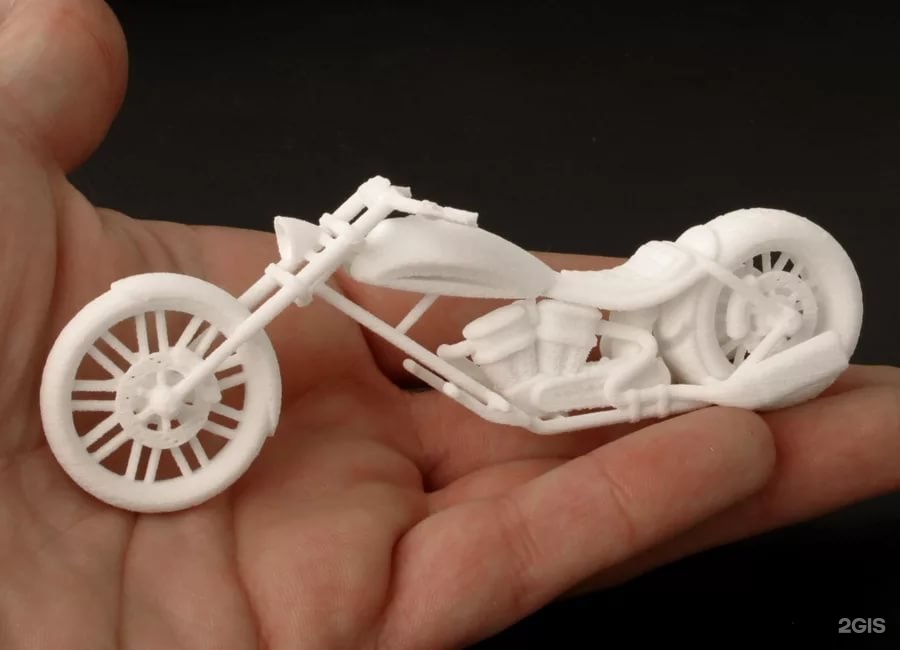 Denmark. nine0104 3D Printhuset printed a 50 square meter office in Nordhavn. The 3D printer used for printing is of the portal type and has a size of 8 x 8 x 6 meters. Print speed 2.5 meters / min. Each layer is 50-70 mm. The print material is concrete made largely from recycled tiles and sand.
Denmark. nine0104 3D Printhuset printed a 50 square meter office in Nordhavn. The 3D printer used for printing is of the portal type and has a size of 8 x 8 x 6 meters. Print speed 2.5 meters / min. Each layer is 50-70 mm. The print material is concrete made largely from recycled tiles and sand.
12. October 2018. Italy. Crane Wasp built a building in ten days using a tricycle 3D construction printer. The house uses passive solar heating technology and natural ventilation. The composition for printing was created on the basis of waste from rice cultivation (it was 25% local soil (clay and sand), 40% straw, another 25% - from rice husks and 10% - from hydraulic lime). nine0003
13. November 2018. Italy. Company Arup in collaboration with the architectural bureau CLS Architetti erected a building in 1 week with an area of 100 sq.m. The building was printed in segments with subsequent assembly at the construction site.
November 14, 2018. Saudi Arabia. The Dutch company CyBe Construction has completed the construction of a building with an area of 80 sq.m. It took about a week to 3D print the necessary elements, and a little more than a day to assemble. The walls are made up of 27 printed blocks, and the parapets needed another 21 blocks to make. nine0003
Saudi Arabia. The Dutch company CyBe Construction has completed the construction of a building with an area of 80 sq.m. It took about a week to 3D print the necessary elements, and a little more than a day to assemble. The walls are made up of 27 printed blocks, and the parapets needed another 21 blocks to make. nine0003
15. August 2019. USA. S-Squared 3D Printers (SQ3D) showed a prototype residential building that can be built from floor to roof in just twelve hours. The house has an area of 46 m2. During the printing process, a 3D printer of a two-support design was used.
16. October 2019. UAE. Apis Cor has announced the completion of the world's largest 3D printed building. Located in Dubai, the 650 sq. meters has a building height of 95 meters and entered the Guinness Book of Records as the largest building printed directly on the construction site.
17. December 2019. Mexico. American company Icon erected two residential buildings for the non-profit organization New Story, in southeastern Mexico. The imprinted buildings have a flat roof, curved walls and an area of 46.5 square meters
The imprinted buildings have a flat roof, curved walls and an area of 46.5 square meters
As can be seen from the impressive list of completed projects, progress in the field of construction 3D printing clearly does not stand still, new techniques are constantly being introduced, various materials are being created, including from recycled raw materials, and high-tech equipment is being developed. In a short period of time, the technology has attracted the interest of a large number of enterprises that are engaged in the development of equipment, special building mixtures, libraries of structural solutions for designing buildings for 3D printing, as well as the preparation of a legislative, regulatory and regulatory framework. nine0003
I am sure that in the future the entire construction process will be able to become fully automated, without human intervention, not only when printing foundations and walls, but also when printing ceilings and roofs, automatically install utilities, doors and windows.



